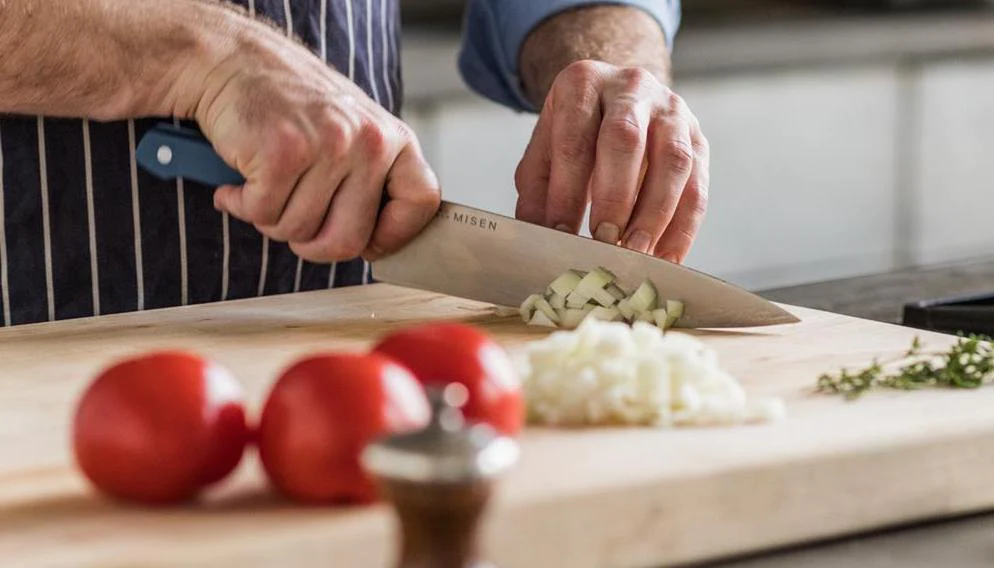
Culinary Knives Buying Guide: The Right Blades Make Cooking Easier
When looking for the ideal chef’s knife to make your slicing, dicing, chopping, and mincing effortless and precise, it’s crucial to define your particular tastes and recognise that there isn’t one knife that is suited for everyone. It may take some time to find your ideal knife, but you’ll know when you’ve found it. So before investing in a whole set of expensive blades, you should follow this simple guide to the different kitchen knives and their usage.
Contents
Anatomy of a Kitchen Knife
There are differences in material, size, and weight that distinguish these popular blades, but regardless of these small differences, knives have the same basic elements and structure. If you want to discover the best-quality culinary knives for a certain job, you need to have a basic understanding of the many elements of a knife, from the point to the butt, and everything in between, before you can move on to the forged and stamped difference.
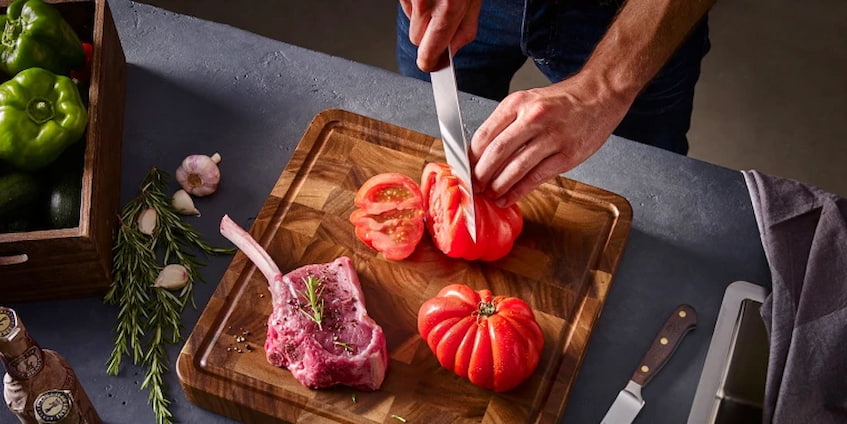
The first part to know is the point of the knife. The point is the blade’s very tip and it’s considered to be the end of the knife. The point is the section of the blade where the tip and spine meet. It’s usually honed to a fine point and is most typically used for piercing and scoring food. The next segment at the front of the knife’s edge, right beneath the point, is called the tip. It’s the section of the blade that is typically employed for delicate chopping and cutting.
The part that does most of the cutting job refers to the sharpened portion of the blade and it’s considered to be the edge of the blade. The sharpness of the knife is determined by how finely the edge is ground, which is determined by both the quality of the knife and how frequently it is sharpened. The edge can be serrated or straight.
The heel is the lowest of the blade edge adjacent to the bolster and furthest from the tip. This part of the edge is typically used when the chef requires additional power or pressure to cut through thicker or harder meals. The heel is the widest area of the knife’s edge and it’s the blade’s strongest point, and it’s great for slicing tough foods like carrots and winter squash.
Forged vs Stamped Kitchen Knifes
A forged knife is one that has been forged from a single piece of metal. A block of steel is pounded into a shape with a heavy press before being polished and sharpened to become a forged knife. The handle is then attached before the blade is polished and shined. When steel is forged, the shape is changed right down to the molecular level, resulting in an extremely powerful blade.
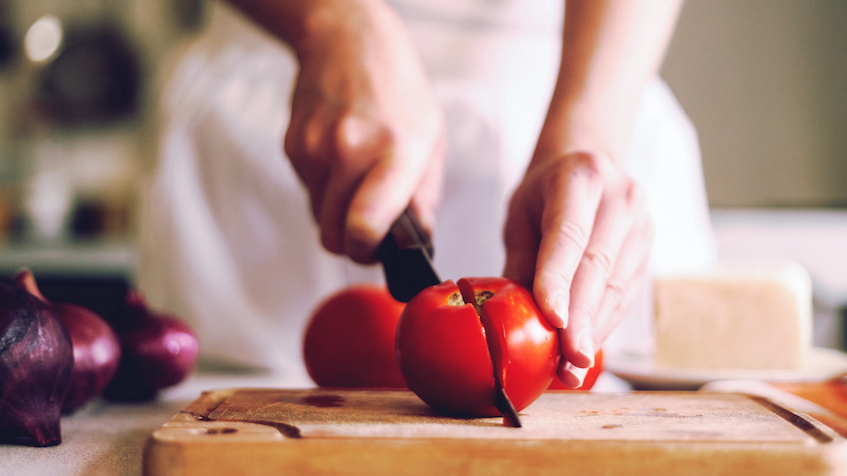
Both the blade and the tang of a forged knife are manufactured from one continuous piece of steel, making it powerful, durable, and well-balanced. Because of the time- and labour-intensive making process, they are frequently more expensive than stamped patterns. However, since they are quite durable, you won’t need to buy new knives for many years.
Stamped knives are created by cutting a single sheet of steel into the shape of a blade using a strong stamping machine. The handle is then attached, and the knife is hardened, sharpened, and polished to provide a sharp edge and a smooth finish. This style of knife is substantially lighter than forged knives since it is made from a thinner piece of steel.
Because the production process is significantly cheaper and faster, stamped knives are often far more inexpensive than forged blades. However, because they are not as excellent at keeping an edge as forged types, they will probably require sharpening more frequently. There is also a larger possibility of the handle breaking.
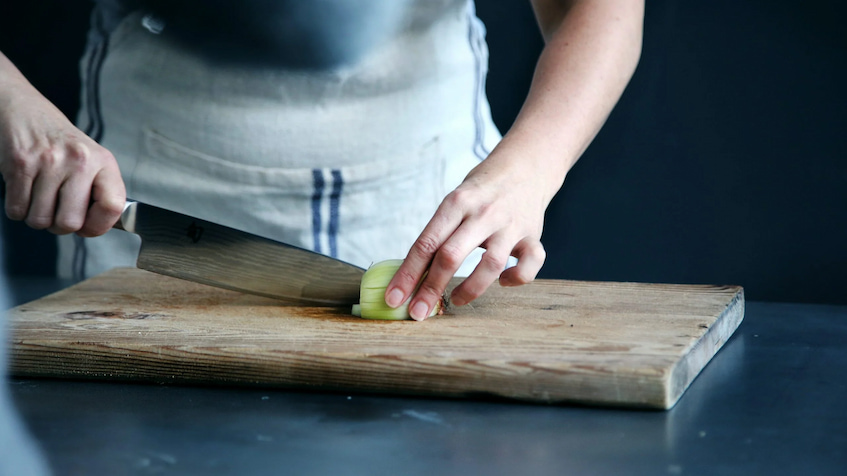
Stamped knives used to have a bad reputation, but the production process has been refined and improved, and several manufacturers now produce stamped knives of equivalent quality to forged designs. In fact, some chefs prefer them because of their lower weight and more pleasant hand feel.
Today, manufacturers are known for producing revolutionary stamped knives of exceptional quality, so you can buy lightweight stamped culinary knives with the same sharpness and longevity as forged ones. By searching for a bolster, you can usually tell if a knife has been stamped. Stamped knives do not often have a steel bolster; instead, the knife’s heel runs right into the handle.
Knife Accessories
A knife is without a doubt one of the handiest tools in the kitchen. However, without some important and required attachments, it might lose its good properties. Sharpeners that keep the edge polished to razor sharpness, sheaths that keep your knife constantly nearby and accessible within seconds, and oils, salves and other ointments that keep the handle and blade consistent are all must-haves when owning any kind of knife.

Whetstones and Knife Sharpeners
From electric sharpeners, whetstones, and honing steels, there is a variety of equipment available to help you maintain a sharp knife’s edge. The first two are used to sharpen a knife blade, whereas honing steels are generally used for realigning the knife’s edge.
Whetstones, also known as oilstones or Japanese water stones, are gritty, rectangular stones that require water or oil to activate the sharpening surface. Some people favour the synthetic surface of Japanese water stones, while others prefer the oilstones. They both function by sharpening your knife’s edge rather than cutting a new one.
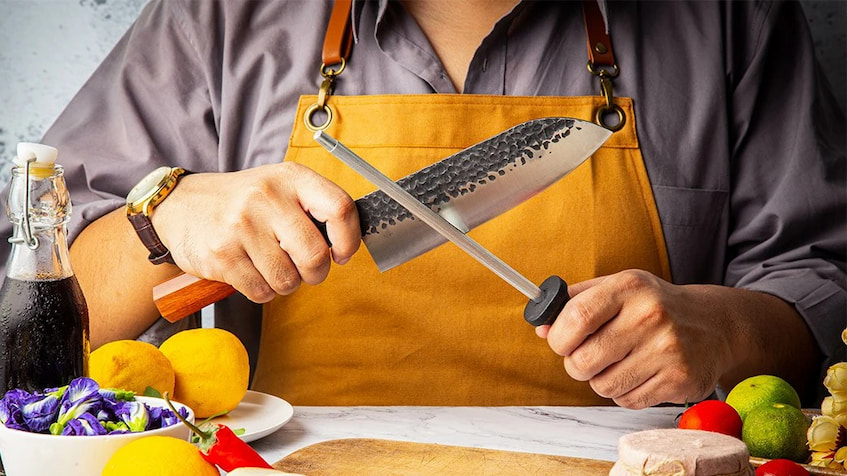
To properly sharpen your kitchen knives using one of these stones, you must hold the knives at the proper angle while running them along the stones, as it can take many passes to sharpen entirely. A handheld sharpener has a slot through which you draw the knife. A handheld sharpener provides more exact control over the sharpening process than an electric sharpener while still providing the convenience of pre-set angles.
They aren’t difficult to use in terms of “knowing how to do it,” but they take greater physical effort. Because they are considerably smaller than electric sharpeners, you may easily store yours in a drawer when not in use. Comparing it to the counterpart, the handheld model is beneficial since it will provide you with a greater edge and more control.


No Comments